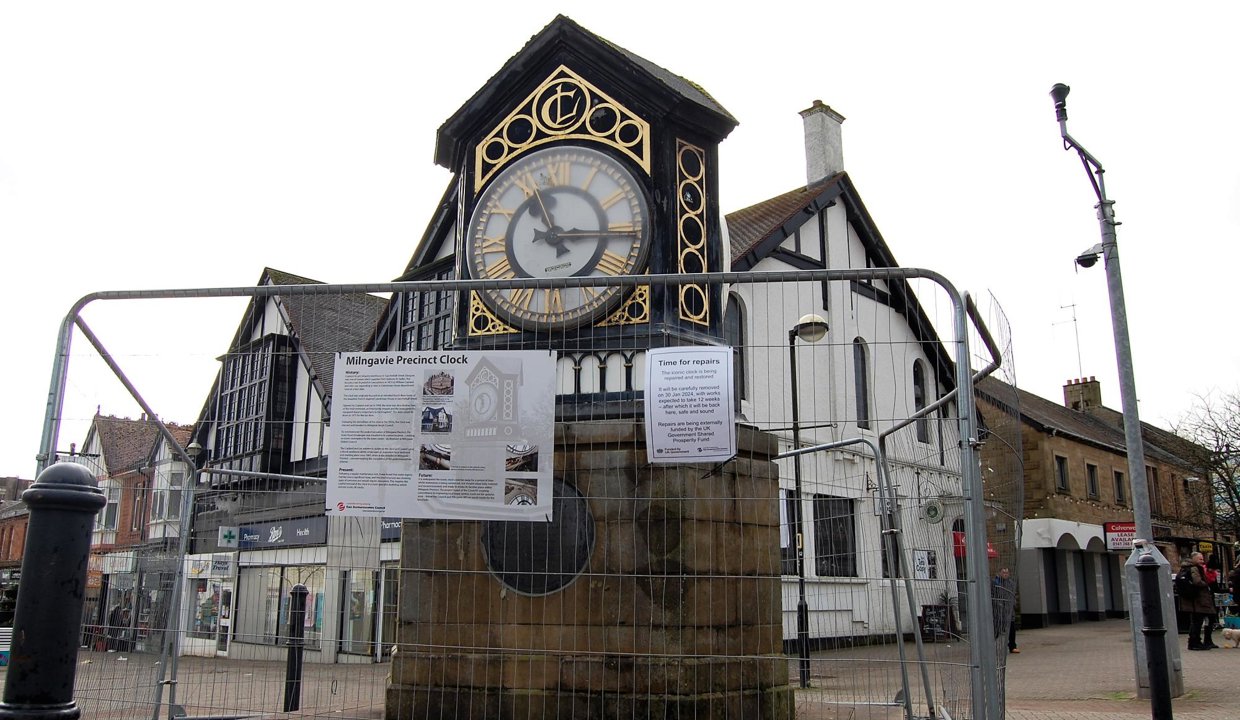Visitors to Milngavie town centre will notice a familiar fixture is missing, but don't worry – it's only temporary.
The much-loved Copland & Lye clock was installed in the precinct in 1981, to commemorate the completion of the pedestrianisation scheme.
Following a regular maintenance visit, it was found that water ingress had become a significant issue and the steel structure was showing signs of corrosion.
The three-faced timekeeper has been carefully removed and safely transported to a specialist workshop which restores iconic UK clocks.
It is anticipated that works will take approximately 12 weeks, after which the clock will be returned to its current location within Milngavie Precinct – fully repaired and recommissioned.
The restoration is being fully funded by the external UK Government Shared Prosperity Fund.
The clock has been an iconic fixture in Milngavie town centre for more than 40 years and is a popular meeting place. These essential repairs will mean it can return and remain in place for many years to come.
"I'm pleased we have been able to allocate external funding – helping to fulfil our ongoing commitment to improving local town centres without putting additional pressure on Council finances."

History of the iconic clock in Milngavie Precinct
Copland & Lye's drapery warehouse in Sauchiehall Street, Glasgow, was one of several which supplied Paris fashions. The business was founded in Cowcaddens in 1873 by William Copland and John Lye, expanding to take in Caledonian House department store at a later date.
The clock was originally housed within an elevated fourth-floor turret of the magnificent, French-inspired Caledonian House in Sauchiehall Street.
Opened by Copland and Lye in 1900, the store was described as: “One of the most extensive, architecturally elegant and the most perfectly-equipped drapery emporiums in the kingdom.”
The store closed its doors in 1971 for the last time. Following the demolition of the store in the 1970s, the clock was rescued and donated to Milngavie Burgh Council.
To commemorate the pedestrianisation of Milngavie Precinct, the three-faced timekeeper was installed – creating an iconic centrepiece for the town centre – by Bearsden & Milngavie District Council.
The Copland and Lye emblem is visible on the clock and, seated upon a blonde sandstone plinth, it has been an important local landmark and meeting place since 1981.



